Carmel Institute 2016-2017 Events Archive
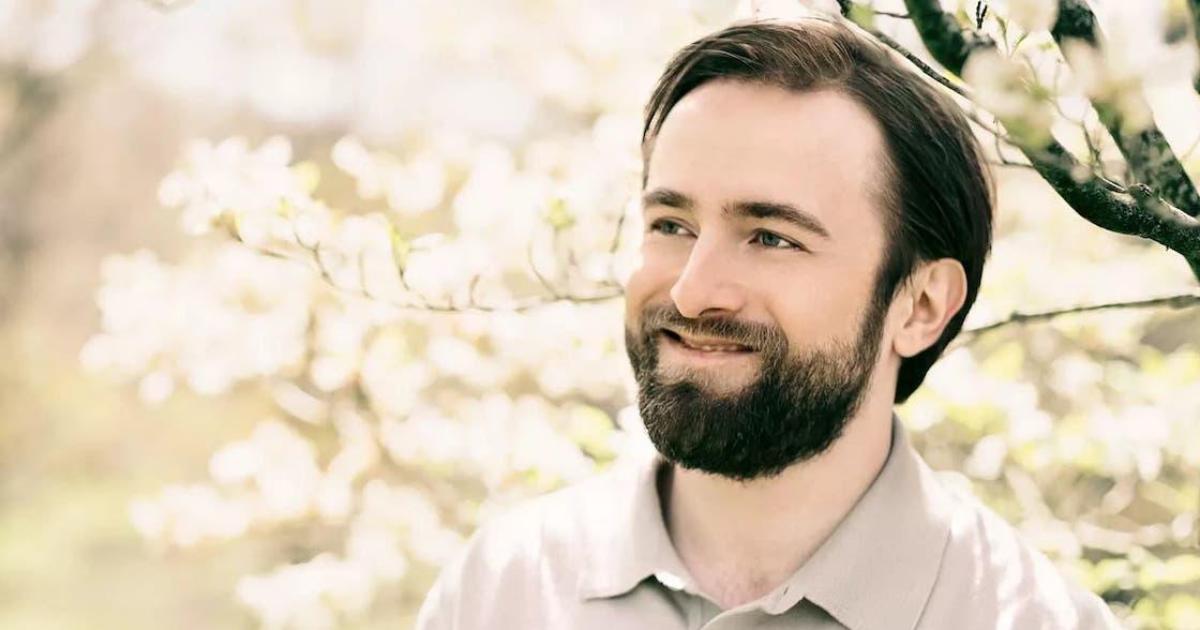
DC Consortium Students Hear Rare and New Russian Compositions at the Kennedy Center
The Carmel Institute supplied tickets for 120 students of Washington, DC universities to experience a unique evening incorporating rarely performed and new Russian music on November 12, 2017. The Mariinsky Orchestra’s program began with Russian futurist composer Alexander Mosolov’s “Iron Foundry” (“Zavod”) and then moved on to the only surviving portion of his 1927 ballet “Steel” (“Stal”). The program also featured Daniil Trifonov on piano and included Trifonov’s own 2014 composition, “Piano Concerto in E flat minor.”
Mosolov is among the “forgotten Russians” who composed in the exciting and highly experimental period of the Soviet during the first two decades of the 20th century. “Iron Foundry” was first performed in 1927 in a concert that included fellow “forgotten Russian” composer Nikolai Roslavet’s “October.” Edwin Evans described “Iron Foundry” as a “song of steel” in 1930 and the piece earned ovations at its 1931 Hollywood Bowl performance. Metallica also staged it with the San Francisco Symphony Orchestra under Michael Tilson Thomas in 2019.
The Carmel Institute and PostClassical Ensemble explored Mosolov, Roslavets, and other artists at the heart of Soviet artistic experimentation in the 1920s in our sixth annual symposium, “The Russian Experiment,” in October 2017.
See Metallica and the San Francisco Symphony Orchestra perform “Iron Foundry" in 2019.
See Trifonov’s piano concerto with the Detroit Symphony Orchestra in November 2017
For more information on Mosolov:
Edwin Evans, “The Liége Festival.” The Musical Times, vol 71: 1052, October 1, 1930, p 901. JSTOR link for those with access.
Larry Sitsky, Chapter 5: “Aleksandr V. Mosolov: The Man of Steel.” Music of the repressed Russian avant-garde, 1900-1929, Greenwood Press, Westport, CT: 1994, p 61. Available on Internet Archive.
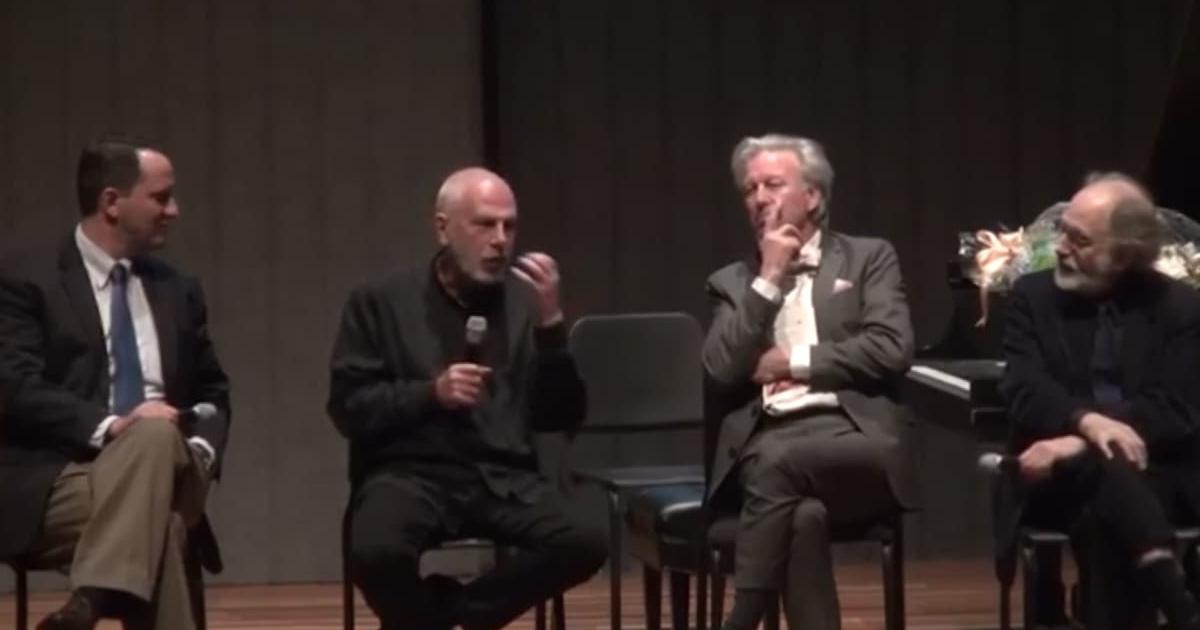
Carmel Institute and PostClassical Ensemble Co-host "The Russian Experiment" Symposium on Russian Cultural Innovations in the Early 20th Century
The Carmel Institute and PostClassical Ensemble presented an innovative symposium to explore the impacts of the Russian Revolutions of 1917 on the arts on October 19, 2017. The symposium integrated traditional presentations with brilliant musical performances from piano virtuoso Vladimir Feltsman and cellist Ben Capps. The symposium examined how Russian composers Scriabin, Mosolov, Roslavets, and Protopopov and artists like Vrubel, Lissitsky, Larionov and Goncherova, Malevich, Popova, Meyerhold, Tatlin, Vertov, and Eisenstein broke new ground in music, architecture, textile arts, and the visual arts of painting and film. The panelists also discussed how these exciting artistic movements intersected with Russian political and historical events in the 1920s.
Read about the event in more detail.
Watch the full symposium video.

DC Consortium Students Hear Prokofiev and Shostakovich at the Kennedy Center
On April 7, 2017, the Carmel Institute purchased 180 tickets for students from the Consortium of Universities of the Washington Metropolitan Area to enjoy soloist Lise de la Salle performing Prokofiev’s Piano Concerto No. 1. Followed by Shostakovich’s Fifth Symphony, the concert was part of the NSO’s “A Salute to Slava,” honoring the late NSO Music Director Mstislav Rostropovich.
Prokofiev wrote his first piano concerto in 1912 and performed in its Moscow premier himself. The young composer and performer won the Anton Rubinstein Prize for this work two years later, playing it again with the Saint Petersburg Conservatory in 1914.
Dmitri Shostakovich wrote his Fifth Symphony in early 1937 set to an Alexander Pushkin poem about rebirth (“Vozrozhdeniye”). According to history writer Solomon Volkov, the Leningrad Philharmonic Orchestra’s premiere of the work that November evoked an ovation lasting over a half an hour. Shostakovich’s Fifth Symphony marked the beginning of a somewhat rocky rehabilitation with Soviet authorities that culminated in Shostakovich becoming General Secretary of the Russian Republic’s Union of Composers from 1960 to 1968.
For more on the performance and audience experience that night, read Patrick Rucker’s Washington Post review of the concert.
Kristin Franco’s review for the MD Theater Guide provides more information about the works and composers themselves as well as the performance.
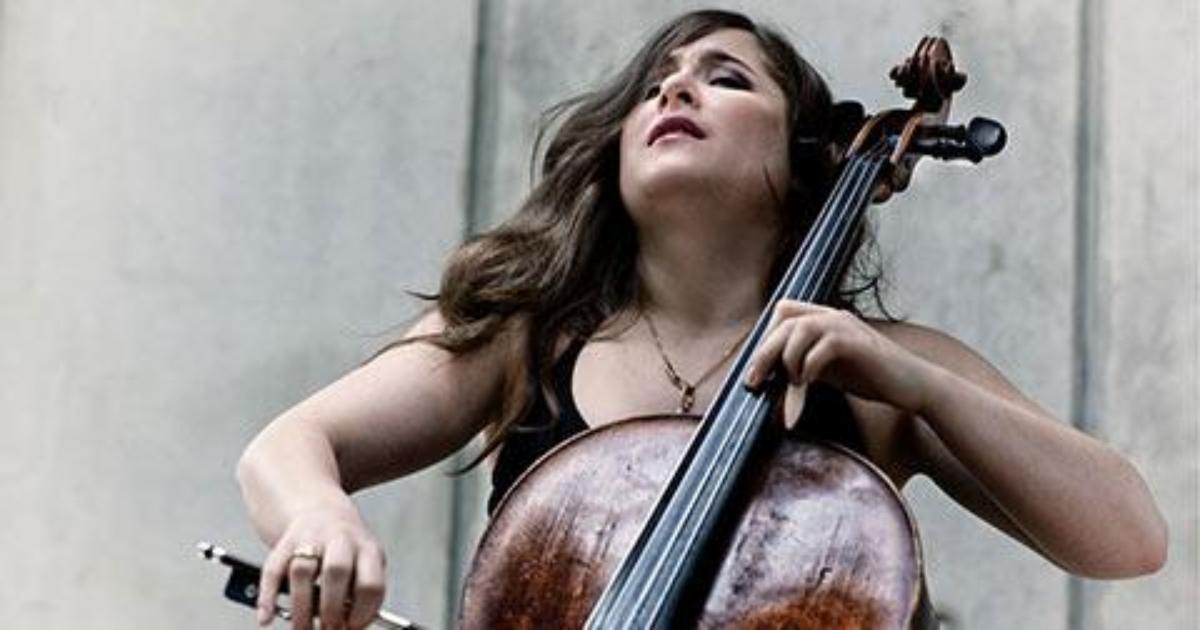
Students Experience Shostakovich's Cello Concerto No 1, Written for Late NSO Music Director Rostropovich
The Carmel Institute offered 92 tickets to students from the Consortium of Universities of the Washington Metropolitan Area to hear the National Symphony Orchestra perform Dmitri Shostakovich’s Cello Concerto No. 1, featuring cellist Alisa Weilerstein on March 11, 2017. The program also included Schubert's Ninth Symphony and Tobias Picker's Old and Lost Rivers. The concert continued the NSO’s “Salute to Slava,” honoring former NSO music director Mstislav Rostropovich. It also served as a rehearsal for the NSO’s tour of Russia for the Rostropovich Festival in Moscow and St. Petersburg at the end of the month, the first time an American orchestra had performed in that festival.
Shostakovich wrote his Cello Concerto No. 1 in 1959 and it premiered with Rostropovich himself as the soloist four days after completion with the Leningrad Philharmonic Orchestra. Two days later, Rostropovich performed it again with the Moscow Philharmonic to make the first recording of the work. In fact, Shostakovich wrote both this concerto and his second cello concerto specifically for Rostropovich, who had studied under Shostakovich at the Moscow Conservatory from 1943 to 1948. After graduating, Rostropovich became the composer’s colleague as a professor at the Conservatory. And they remained personal friends until Shostakovich’s death in 1975.
For more information about the festival as well as the NSO’s distinguished history of cultural diplomacy with Russia, see this Washington Post article “ ‘There’s still high culture in America’: Why the National Symphony Orchestra went to Moscow,” by Anne Midgette.
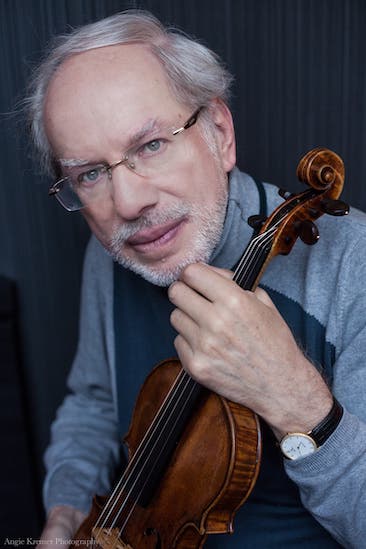
DC Consortium Students Experience "A Salute to Slava" at the Kennedy Center
The Carmel Institute purchased tickets for 92 university students from the Washington Consortium and their guests to enjoy a Saturday-evening National Symphony Orchestra performance of Dmitri Shastokovich’s Symphony No. 8 in C Minor, Op. 65 and Mieczyslaw Weinberg’s Violin Concerto in G major, Op. 67 on January 28, 2017. “A Salute to Slava,” the concert commemorated what would have been Mstislav “Slava” Rostopovich’s 90th birthday and honored his 17-year service as music director of the NSO. The Washington Post called it "...a monumental and sobering salute to its former music director."
Rostopovich's friend Shostakovich wrote his 8th, better known as the “Leningrad Symphony,” under the pressure of the Great Patriotic War in the summer of 1943, and the USSR Symphony Orchestra performed it for the first time that November. The pairing of works recreates the feeling for this time in Soviet and European history, as Shostakovich and Weinberg were friends who lived near each other in war-time Moscow.
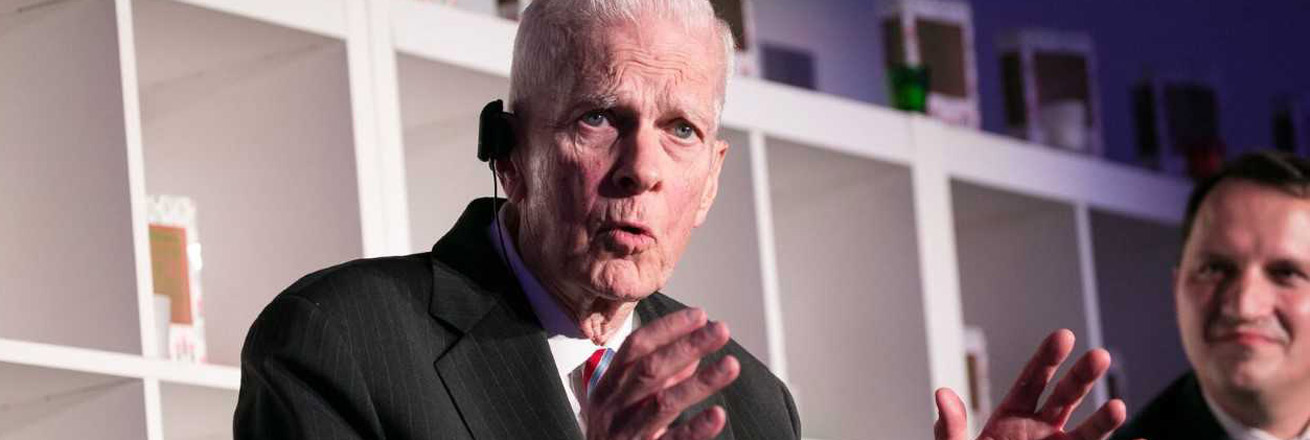
Symposium to Honor Dr. James Billington and his Groundbreaking Work on Russian culture, “The Icon and the Axe.”
On November 16, 2016, the Carmel Institute, The Kennan Institute at the Wilson Center, and the Association for Slavic, East European, and Eurasian Studies co-sponsored an evening to honor Dr. Billington’s lifetime of work and contributions to the study of Russian culture on the fiftieth anniversary of the publication of his magnum opus “The Icon and the Axe.”
Dr. James H. Billington earned his PhD in Russian history at the University of Oxford, then taught history at Harvard and Princeton. In 1973, he was director of the Woodrow Wilson Center. Billington left the Wilson Center when President Reagan nominated him to be Librarian of Congress in 1987 and the Senate confirmed him unanimously. He led the Library of Congress until his retirement in 2015. While Librarian, he started to digitize of many Library materials and he launched a massive effort to preserve the Library’s holdings for future generations.
Read more about the symposium and watch the full symposium video.
Watch the highlights from the night.
Learn more about Dr. Billington’s work and standing in Russian cultural history from Diplomatic Courier’s interview with the man himself.
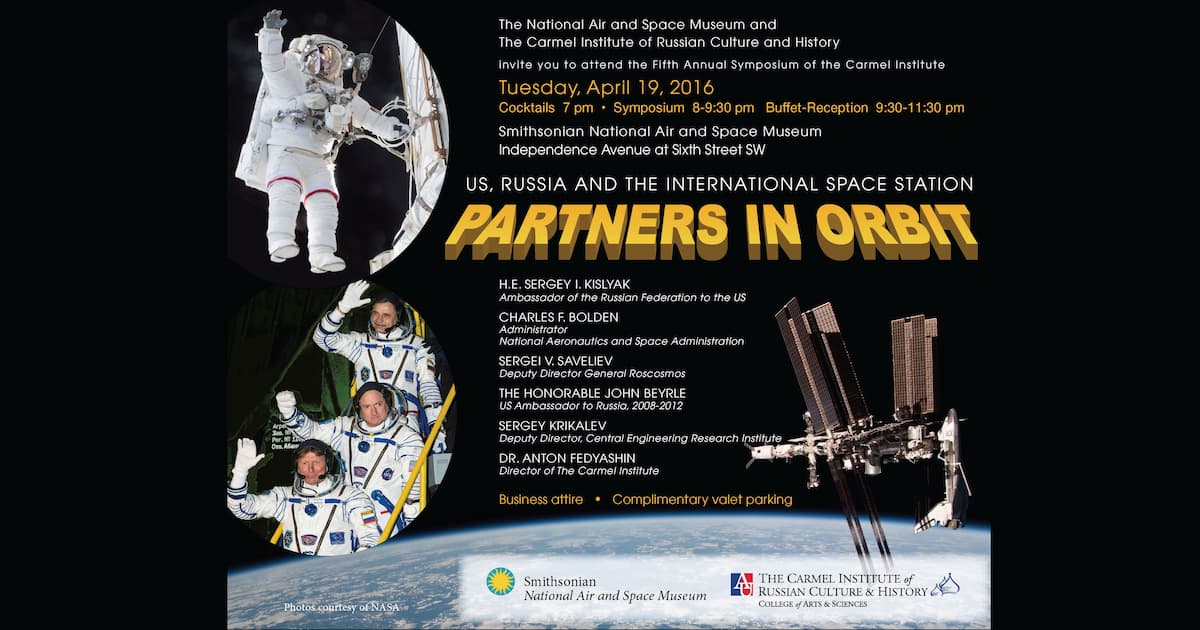
The Global Benefits of International Cooperation: the Institute’s 2016 “Partners in Orbit” Symposium
The Carmel Institute held its 2016 symposium “Partners in Orbit” at the Smithsonian Institution’s National Air and Space Museum in Washington, DC. It explored and highlighted the ways international cooperation made possible the International Space Station and the benefits it has brought everyone around the world.
Our impressive panel of speakers included:
Dr. Anton Fedyashin, Director of the Carmel Institute and Associate Professor at American University
His Excellency Sergei Kislyak, Ambassador of the Russian Federation to the United States
Russian Cosmonauts Yuri Melenchenko, Alexey Ovchinin, and Oleg Skripochka from the International Space Station (video remarks)
Charles F. Bolden, Jr., Administrator of the National Aeronautics and Space Administration and former crewmate of Sergey Krikalev
Sergei Saveliev, Deputy Director of Roscosmos, the Russian Space Agency
Sergey Krikalev, Deputy Director of Central Engineering Research Institute, former crewmate of Charles F Bolden, Jr. and cosmonaut who once held the record for the longest time in space
The Honorable John Beyrle, Jr., former Ambassador of the United States to the Russian Federation and Carmel Institute Advisory Board member
General Alexei Leonov, Russian cosmonaut and the first man to walk in space (video remarks)
The five-minute highlights video begins with footage of the pre-symposium donation presentation of a bust of Yuri Gagarin, the first human in space, from the Embassy of the Russian Federation to the Smithsonian. It is currently on display in the “Destination Moon” hall. The video then goes on to excerpts from the symposium speakers and glimpses into the post-symposium reception celebration, which included not only the speakers but also other astronauts and specialists from NASA interacting with over hundreds of Consortium students and other guests.
Learn more about U.S.-Russian cooperation in space over the last 40 years in our more detailed article, including the link to our full 71-minute symposium video.
Looking for older events? Check out our News & Events Archive.